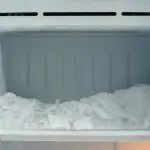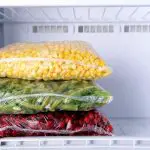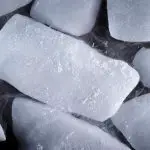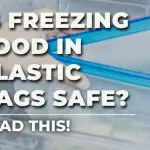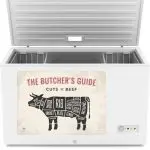Freezer Frost: Safe to Eat or Dangerous? (Answered)
Due to the incredibly low temperatures, storing food in the freezer helps to prevent the development and growth of bacteria. However, freezer frost can eventually cover the food items and sides of your freezer, leading to the question, is it safe to eat?
It is normally safe to eat freezer frost since it is simply frozen moisture. However, there are exceptions, such as when bacteria cross-contaminate the freezer frost by contact with improperly stored food. Additionally, it is also safe to eat foods that experience freezer burn from freezer frost.
It’s important to learn whether freezer frost is safe to consume based on the state of your own freezer and frozen food. To help you learn to distinguish whether the freezer frost in your freezer is safe to consume, let’s look into freezer frost in depth.
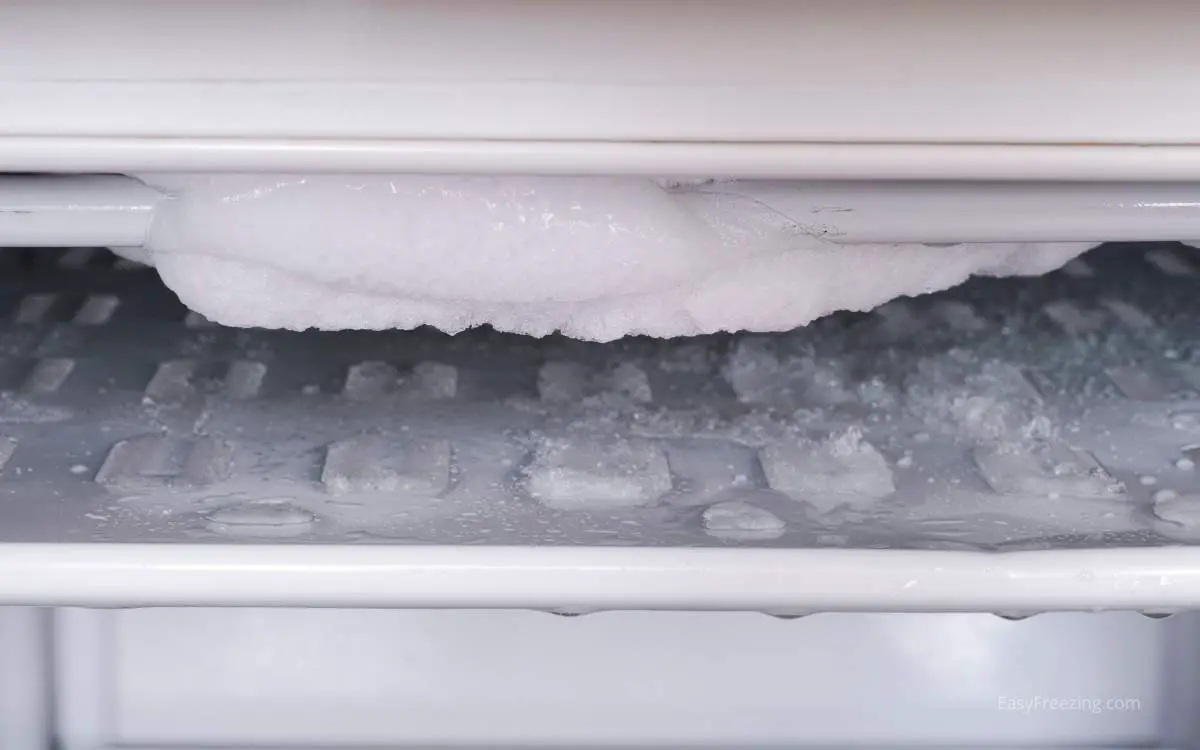
Is Freezer Frost Safe To Eat?
To confirm whether your freezer’s frost build-up is safe to eat, we need to look into what freezer frost is and how it develops. Freezer frost develops when moisture comes into contact with the evaporator coils in your fridge and then eventually freezes.
Moisture can come into contact with evaporator coils for multiple reasons, including if you open and close the door too frequently or place hot food in the freezer, increasing humidity levels. It can also be due to the quality and make of the fridge/freezer itself and whether the freezer door seals properly to keep cool air in and warm air out.
Since freezer frost is essentially frozen moisture, without considering any other factors, it should be safe to eat. Furthermore, the freezing process destroys some amount of bacteria, making it even safer. However, there are still plenty of considerations you have to make regarding eating freezer frost directly or freezer-burned food.
Consuming Freezer Frost Directly
While it is generally not dangerous to consume freezer frost in its natural state, certain circumstances make it unsafe. For example, if you add raw pork into the freezer and don’t package it properly, then blood and germs can seep into the freezer frost and thus make it unsafe to eat in its raw form.

Similarly, if you add any food with salmonella into the freezer and it cross-contaminates the freezer frost, then the frost will be unsafe to eat. In particular, the survivability of salmonella in lamb meat juice is high, making the risk even more significant. However, this is only the case if salmonella is already contaminating the meat.
Microorganisms that cause disease can also appear in liquids, such as water. Drinking contaminated water can cause certain bacterial illnesses like gastroenteritis and typhoid fever. Other conditions you can get include cholera and shigellosis.
If you take a bowl of hot water contaminated with certain types of bacteria and place it in your freezer, then some of the moisture can become freezer frost and thus become unsafe to consume directly. There are also some people who state that refrigerator coolant can contaminate the freezer frost.
Consuming Freezer Frost Through Food or Drinks
If you leave food in the freezer for too long and don’t package it properly, it can end up receiving freezer burn, which is a direct consequence of freezer frost. Freezer-burned food often comes with a layer of frost on the surface of the food itself. If you thaw and cook the food properly, it is typically safe to eat, with a few exceptions.

Not thawing certain types of food covered in freezer frost properly can lead to the growth of bacteria. Moreover, not cooking frozen meat at the right temperatures can also introduce bacteria that make it dangerous to eat.
If the meat has a strong and unpleasant odor after thawing and a slimy or sticky texture, it is no longer safe for consumption. Another case in which freezer-burned food is not safe to eat is when there is already bacteria contaminating the food before the freezing process.
Otherwise, meat should be safe to consume if they don’t meet the above conditions. Next, let’s look at the best way to prepare food coated in a layer of freezer frost.
Preparing Food Covered in Freezer Frost
There are several ways you can prepare and cook food covered with freezer frost to help make it safe to eat and more delicious. Let’s say that you have frozen chicken in the freezer and you’ve decided to cook it. Ensuring food safety after the chicken is already covered in frost starts with the thawing process.
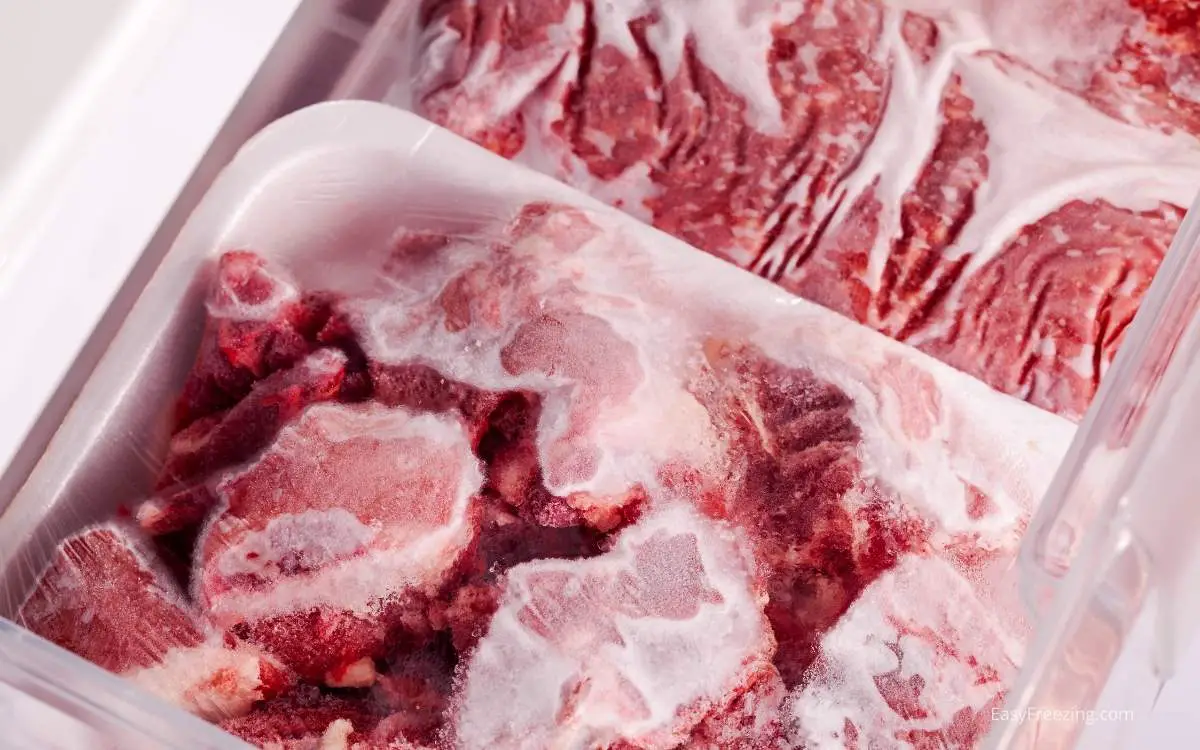
Thawing Process For Freezer Food
Thawing meats involves letting the frost melt in the fridge for over 24 hours, depending on the size and thickness of the meat. You must ensure that you isolate the meat so that it does not touch any other food and lead to cross-contamination. While it may still be safe to eat after the cooking process, other food items it touches may not be.
Discarding Freezer Frost Water
After the chicken thaws in the fridge properly, the freezer frost should have melted into a small pool of cold water, with some other liquids and juices mixed in. At this stage, you should separate the meat from the water and safely discard the liquid in the sink.
Cooking Freezer-Burned Food
The next step is to cook the food properly at the right temperatures. The World Health Organization states that temperatures exceeding 149°F can quickly kill bacteria, which is even below the boiling point of water at 212°F. As such, when it comes to chicken and other types of meat, you need to cook it at a temperature exceeding 149°F.
Removing Freezer Frost
Although freezer frost is generally safe to eat, you should still work to remove the build-up of freezer frost to protect your freezer and give you more space to put food items. If you have items in your freezer, you need to find an alternative way to store the food while you remove the frost.
After you empty the freezer, turn off the fridge and wait for the freezer frost to melt. If there is a lot of freezer frost, you can place a container just below to catch all the water. After everything melts, you can wipe away the rest of the moisture and turn your freezer back on.
Freezer Frost: Safe to Eat or Dangerous – Conclusion
To wrap things up, you will generally be fine if you eat freezer frost, as long as nothing contaminates the frost, such as frozen blood or other liquids or bacteria from meats. If the freezer frost is contaminated, it can subject you to food poisoning and foodborne illnesses.
As a general rule of thumb, it’s probably best to not eat freezer frost.
Frequently Asked Questions
Why Do Some People Crave Eating Freezer Frost?
Some people may crave eating freezer frost, ice, or cold items in general due to compulsive ice chewing (or pagophagia). People tend to associate compulsive ice chewing with conditions such as iron deficiency anemia.
Can Salmonella Survive Freezing?
Salmonella is unable to grow in frozen food. However, salmonella can survive in the freezer if it already contaminates the food before the freezing process. Moreover, salmonella bacteria can grow if you thaw frozen food at room temperature instead of inside the fridge.
Can Parasites Live in Frozen Meat?
Parasites are multicellular organisms that are unlikely to survive sub-zero temperatures. However, the effectiveness of freezing can vary depending on the type of parasite. For example, freezing is less effective for roundworms but more effective in destroying tapeworms.

